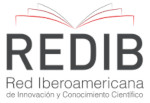Levantamento entomológico em cultivo de Manihot esculenta e em área de Mata Atlântica
DOI:
https://doi.org/10.17648/diversitas-journal-v6i2-1160Abstract
ABSTRACT: Manihot esculenta, popularly known as cassava, is a common food in tropical and semi-tropical countries, being the Northeast region, it is grown mainly in areas common to periods of drought and low fertility agricultural soils, being one of the main cultivated in the state of Alagoas, which is cultivated cultivation for family exploitation and has a high potential for a food animal. The research aimed to survey the cultivation of M. esculenta and an area with Atlantic Forest reserves of orders and families of arthropods present in both areas. The collection took place from April to June. To carry out the experiment, pitfall traps and a yellow tray were used, their assembly proceeded as follows: 10 openings were made in the soil of the selected areas so that the edges of the traps were level with the soil surface. , these were arranged in a zigzag with a distance of 3 meters, inside the traps were 500 mL of water and 5 drops of detergent for the surface tension of the broken pit water, traps of the yellow tray-type were also placed, in which 10 were used trays painted with yellow paint, this particular color is used as an attraction for some species of arthropods. For an analysis of the data, the Shannon-Wiener, Margalef, and Berger-Parker dominance indices were used, obtaining results regarding the highest diversity and domain indices in the traps in the forest and cultivation region. It was found from the results, that from the identified arthropods, the predominance of the families Formicidae (44.2%) and Muscidae (44.9%) was obtained, being identified 10 orders and 14 families of the phylum Arthropoda, which choices to Atlantic Forest fauna and cassava cultivation. Thus, the study leading to new analyzes related to the constitution of the fauna of local invertebrates, given the diversity of terms collected.
KEYWORDS: Diversity, Families, Indices.
Metrics
Downloads
Published
How to Cite
Issue
Section
License
Copyright (c) 2021 Vanessa Fernandes Soares, Luiz Fernando da Silva, Rubens Pessoa de Barros

This work is licensed under a Creative Commons Attribution 4.0 International License.
The Diversitas Journal expresses that the articles are the sole responsibility of the Authors, who are familiar with Brazilian and international legislation.
Articles are peer-reviewed and care should be taken to warn of the possible incidence of plagiarism. However, plagiarism is an indisputable action by the authors.
The violation of copyright is a crime, provided for in article 184 of the Brazilian Penal Code: “Art. 184 Violating copyright and related rights: Penalty - detention, from 3 (three) months to 1 (one) year, or fine. § 1 If the violation consists of total or partial reproduction, for the purpose of direct or indirect profit, by any means or process, of intellectual work, interpretation, performance or phonogram, without the express authorization of the author, the performer, the producer , as the case may be, or whoever represents them: Penalty - imprisonment, from 2 (two) to 4 (four) years, and a fine. ”


















